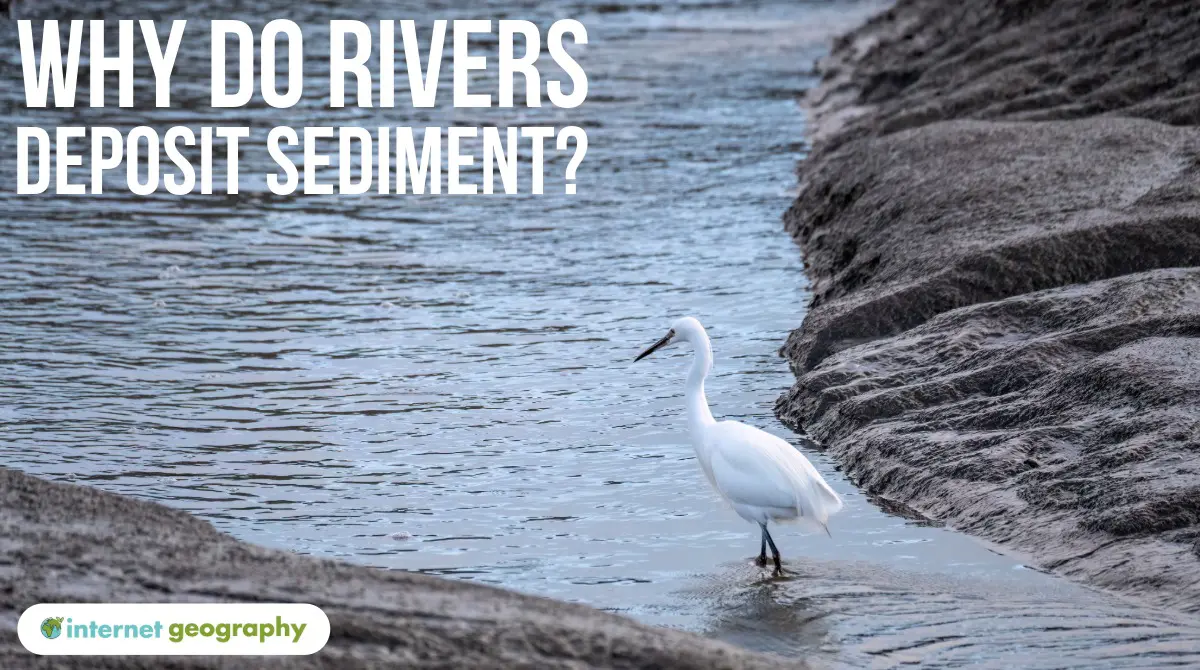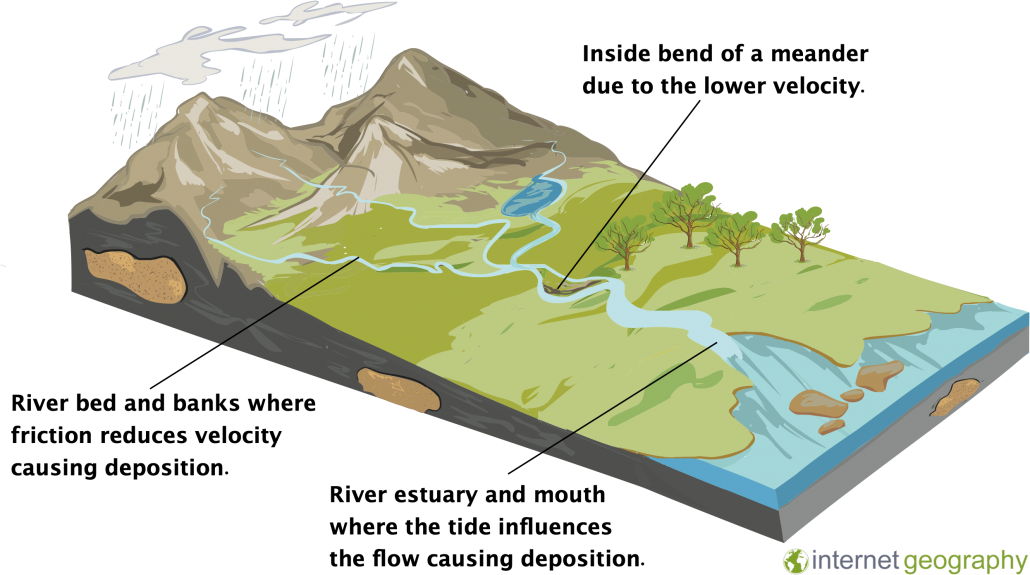Why do rivers deposit sediment?
Deposition is when material transported by a river is dropped. Material deposited by a river is known as sediment. The larger the material, the higher the velocity needed to transport it. Therefore, when velocity decreases, the large boulders are the first to be deposited. Whereas finer materials, such as clay particles, are the last to be deposited.
Deposition occurs whenever a river loses energy and velocity falls. This can be when:
- a river enters a shallow area (this could be when it floods and comes into contact with the flood plain)
- at the base of a waterfall
- on the inside bend of a meander
- towards its mouth, where it meets another body of water.
Deposition leads to the formation of a range of landforms in the lower course of the river.


